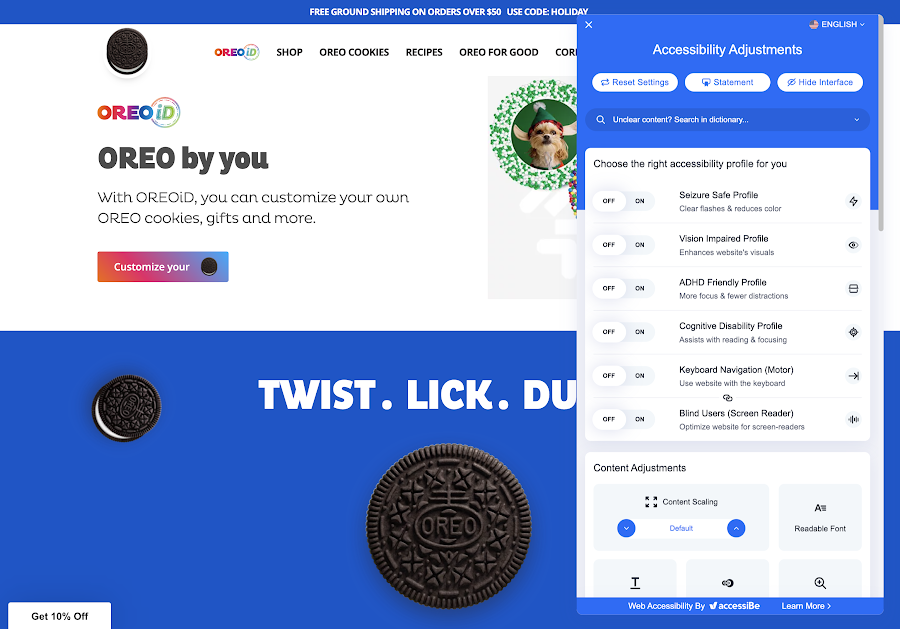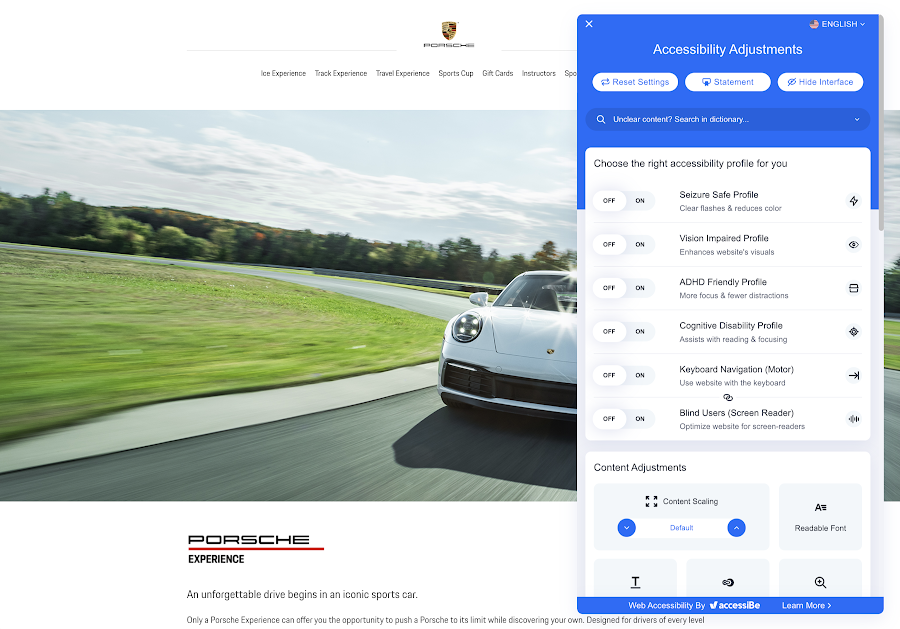A more perfect web: How accessiBe is leading a digital accessibility revolution with the cloud

Niv Penso
Chief Technology Officer, accessiBe
When only 3% of websites in the U.S. are accessible, we have a long way to go. AccessiBe is using cloud to make expanding accessibility services across the digital world fast and easy.
The internet is an essential part of our daily lives, but not everyone can enjoy all it has to offer. In the United States, one in four people live with a disability, yet only around 3% of websites are considered accessible to people with disabilities. At accessiBe, our mission is simple: We want to develop technological solutions that help businesses do the very best they can to tackle web accessibility, regardless of resources, budget, or knowledge. We want everyone to join the accessibility revolution.
To better support our services, we decided to transition to a 100% serverless, cloud-based environment that would streamline our processes, enable a more positive developer experience and help us further develop our ecosystem of accessibility products and services.
Making accessibility accessible
Our flagship product is accessWidget, a session-based design and UI adjustment tool that makes websites more accessible. You can get accessWidget up and running in just three minutes and then through the interface, the end user can control the fonts, the contrast — pretty much everything on the user-interface (aka UI) level. If you have epilepsy, for example, the widget can remove any blinking animations or moving elements that could trigger a seizure.
It can also complement existing accessibility tools, such as screen readers. If there are images on a webpage that do not have alternative text, a screen reader will just say “image”, or read out the file name. The accessWidget scans the image using optical character recognition (OCR) and provides a brief description, which makes for a better experience when browsing. We also offer accessFlow, an all-in-one accessibility platform for developers, and a free audit tool that anyone can use to assess their website.
Our ambition is to keep developing new products and expand our reach, so we can help more companies understand how worthwhile it is to invest in digital accessibility — as in the example above, of a quarter of Americans experiencing a disability, that is both a lot of people, and a lot of potential customers, being left out.




In order to continue to grow our offerings to meet this huge population of users, we wanted a cloud provider that could offer certain key features, such as robust managed services and a serverless approach — as well as a strong commitment to DEI and accessibility. Google Cloud was a natural choice.
We’ve been working closely with the Google Cloud team, and implemented Google Cloud Run, which has been something of a game changer for its ability to quickly build, deploy, and scale applications in virtually any programming language. We’re now running 100% serverless and using Cloud Run for most of our computer processing, which has allowed us to innovate and iterate like never before.
The cloud creates accessibility for developers, too
Our main aim was to shift from local development to cloud development. You can test something as much as you like in a local environment, but at the end of the day, it’s not the same as your production environment. Our hope was to reduce issues by making our testing and staging environment as similar as possible to production.
We created a complete infrastructure as a code layer that generates cloud resources automatically without any manual involvement. From there, we were able to create a complete new staging environment in minutes that looks exactly like production. Our engineers are now able to work around five-times faster, and every infrastructure change goes through our complete development process of linting, testing, reviewing and approval. So we basically structured the process with automation that dramatically reduced the development time.


Since migrating to Cloud Run, our development experience has become far more streamlined and more positive for the people we work with. With Cloud Run and CI/CD pipelines for continuous integration and delivery, we can deploy updates multiple times each day; if anything goes wrong in production, we just roll it back with minimal impact on our operations. And if we ever need to debug our Cloud Run services in production, we turn to Rookout, a Google Cloud partner, which allows us to spot and resolve issues up to five-times faster through tools like an unbreaking breakpoint in our code.
Having a highly fault-tolerant environment and being able to trust our infrastructure makes everything so much easier and engaging for our developers. We’re also enjoying increased scalability, which has been especially valuable on our accessFlow platform, because sharing those development tools can be very compute-heavy.
An AI-enabled future accelerates accessibility
There are a lot of unknowns when you begin a new working relationship on the cloud, which is why the expertise and support of your chosen platform can be so important. Our development team is already more productive and looking forward to moving on to the next steps of our migration with Google Cloud. We also expect to lower our costs considerably now that we no longer have idle virtual machines consuming resources unnecessarily.
We have some exciting projects in the pipeline that will enable us to boost our offerings and further contribute to making accessibility tools available to everyone. One of those products is accessFind, a search index that focuses on accessible websites, currently in beta. The other is accessCampus, an accessibility knowledge hub that offers courses, articles, and guides.
We’re also working on several data projects that will see us integrate new, increasingly efficient machine learning models that will enable us to better understand how websites are built and what we need to do to make them truly accessible. The models are showing great results so far, and we’re looking forward to incorporating them into our cloud environment using the BigQuery data warehouse for storage and analysis.
We've helped more than 150,000 websites of small and medium businesses open their websites to people with disabilities. But that’s just the beginning: thanks to the power and reach of the cloud, we can keep developing technological solutions that will drive the accessibility revolution.



